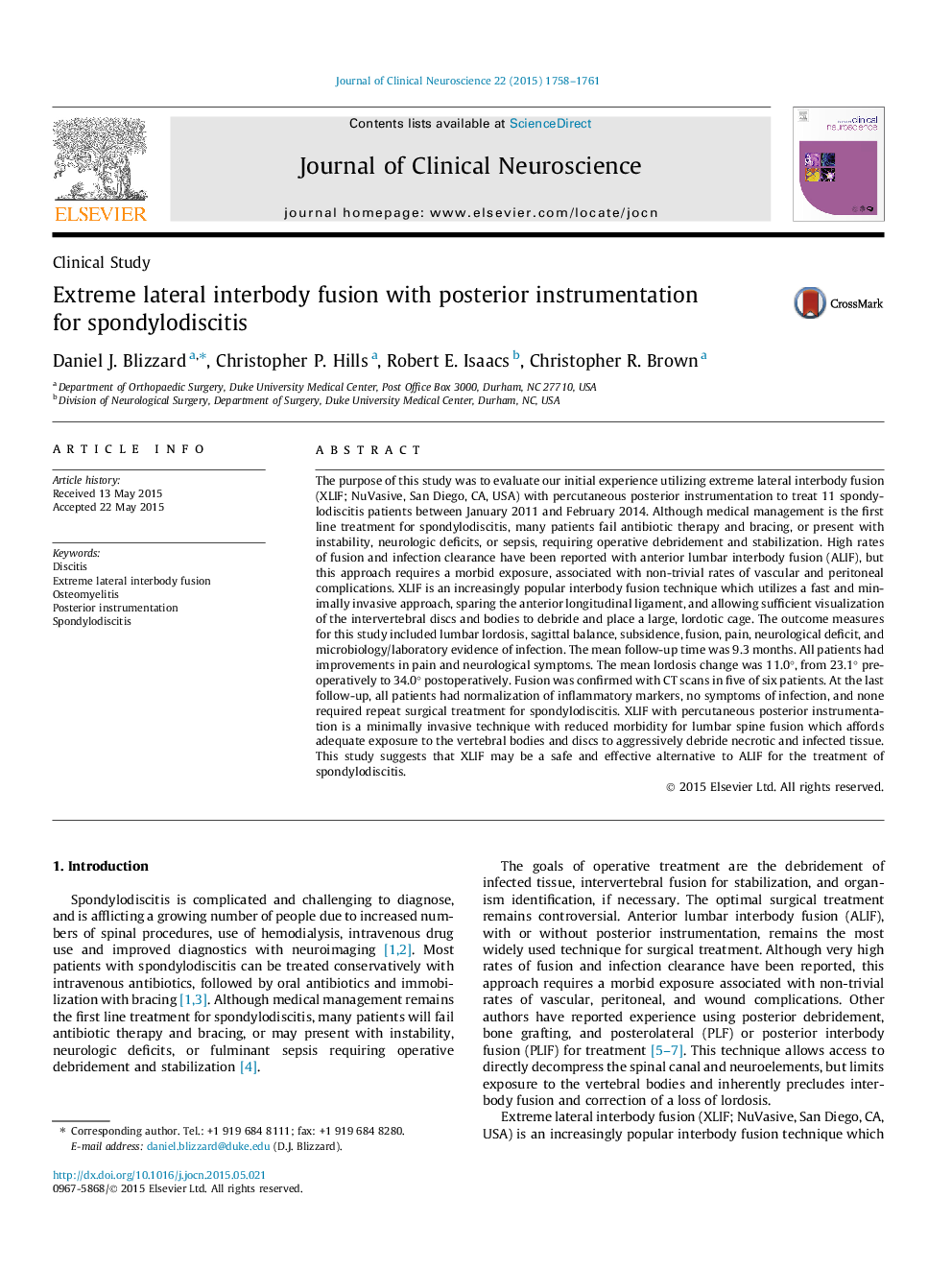| کد مقاله | کد نشریه | سال انتشار | مقاله انگلیسی | نسخه تمام متن |
|---|---|---|---|---|
| 3058646 | 1187410 | 2015 | 4 صفحه PDF | دانلود رایگان |
• Anterior lumbar interbody fusion (ALIF) is currently the gold standard for refractory spondylodiscitis but has risks.
• Extreme lumbar interbody fusion (XLIF) is a minimally-invasive approach with a wide view of the discs and vertebral bodies.
• 11 patients were treated successfully using XLIF with resolution of infection and symptoms.
• XLIF may be a safe and effective alternative to ALIF for spondylodiscitis.
The purpose of this study was to evaluate our initial experience utilizing extreme lateral interbody fusion (XLIF; NuVasive, San Diego, CA, USA) with percutaneous posterior instrumentation to treat 11 spondylodiscitis patients between January 2011 and February 2014. Although medical management is the first line treatment for spondylodiscitis, many patients fail antibiotic therapy and bracing, or present with instability, neurologic deficits, or sepsis, requiring operative debridement and stabilization. High rates of fusion and infection clearance have been reported with anterior lumbar interbody fusion (ALIF), but this approach requires a morbid exposure, associated with non-trivial rates of vascular and peritoneal complications. XLIF is an increasingly popular interbody fusion technique which utilizes a fast and minimally invasive approach, sparing the anterior longitudinal ligament, and allowing sufficient visualization of the intervertebral discs and bodies to debride and place a large, lordotic cage. The outcome measures for this study included lumbar lordosis, sagittal balance, subsidence, fusion, pain, neurological deficit, and microbiology/laboratory evidence of infection. The mean follow-up time was 9.3 months. All patients had improvements in pain and neurological symptoms. The mean lordosis change was 11.0°, from 23.1° preoperatively to 34.0° postoperatively. Fusion was confirmed with CT scans in five of six patients. At the last follow-up, all patients had normalization of inflammatory markers, no symptoms of infection, and none required repeat surgical treatment for spondylodiscitis. XLIF with percutaneous posterior instrumentation is a minimally invasive technique with reduced morbidity for lumbar spine fusion which affords adequate exposure to the vertebral bodies and discs to aggressively debride necrotic and infected tissue. This study suggests that XLIF may be a safe and effective alternative to ALIF for the treatment of spondylodiscitis.
Journal: Journal of Clinical Neuroscience - Volume 22, Issue 11, November 2015, Pages 1758–1761
